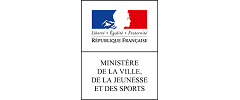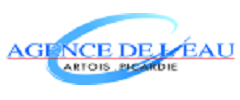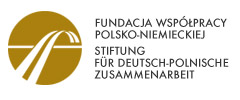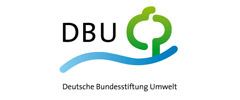Textiles : Stop the chemical overdose!
Towards more coherent and transparent rules for textiles in EU and beyond for better protection of workers, consumers and the environment
31.10.2013 |WECF

But yet, today’s textile model needs to be entirely renewed from the basis. Adding to inhuman working conditions, which the tragic collapse of the Rana Plaza (Bangladesh) unveiled some 6 months ago, comes the global contamination of the textile supply chain through the use of hazardous chemicals. On the 1900 chemicals used by the textile industry, 165 only have been classified according to their hazardous properties. But what about the others? Whereas the use of hazardous chemicals in textiles is of concern for many European citizens, WECF releases an exhaustive report and its executive summary with most recent update on chemical contents in babies’ and children’s textiles, which expose the most vulnerable members of our societies.
When textiles are not kind to our skin…
Dyes are textile ingredients of concern, since many are suspected or confirmed to trigger contact allergies, a category of chronic diseases with a huge socio-economic impact. On 3000 people using a mix od 8 disperse dyes, the frequency of contact allergies appears to be 1,5%. Despite the EU ban of a certain number of azo dyes which release carcinogenic amines, a 2013 report commissionned by DG Enterprise (European Commission) worries about the lack of data on the concentrations of chemical mixtures which end up in the final textile articles, and estimates that existing limits for sensitizing substances – which trigger allergic reactions- are “arbitrary”.
Phthalates, sleeping bags and pyjamas : when common sense gets lost
You have heard about phthalates, these plastifiers, some of which are restricted or banned in toys or articles which can be placed in the mouth by children. They can make up to 40% of the plastisol printing used in some textiles. Any parent with common sense would expect a pyjama to be as safe as a toy or a sleeping bag. But yet, guidance documents on EU legislations explain that a pyjama is designed to dress a child during sleeping and not to facilitate the sleep… therefore since not intended to be placed in the mouth, sucked or chewed, it is not covered by the above restriction, contrary to a sleeping bag! Who could have guessed so?
Formaldehyde use in textiles, subject to more stringent regulations in China than in France
One would expect Chinese chemicals regulations to be far beyond chemical regulations in place in the EU. But formaldehyde may prove a wrong example. A well-known sensory and skin irritant, as well as carcinogenic compound, formaldehyde is subject to restrictions both in France and China: both countries have set a maximum limit of 20 ppm in babies and infants textiles. But regarding textiles intended to enter in direct contact with the skin, China has set a maximum threshold of 75 ppm, whereas France allows 100 ppm. At EU level however, France supports the classification of formaldehyde – considered a known human carcinogen by the International Agency for Research on Cancer (IARC) - as carcinogenic for humans (1A), which is a way to better regulate this compound within the EU.
Flame retardants : a hot issue
Flame retardants are among the most controversial issues of textile regulations, since flame resistance requirements may be contrary to the aim of reducing the use of said compounds. Some brominated flame retardants are banned from use in textiles, but other flame retardants are not, and their substitutes, like TCEP, TCPP or TDCP which are about to be phased out from toys, are not banned from use in textiles.
Labels, tools to help consumers making informed choices
Some companies are setting so-called “restricted substances lists” i.e. the list of chemicals which they ban or limit in their products, but to date, there are no positive lists of substances used by textile companies, which many actors deeply regret, as shown by numerous reports. Moreover, it has been noted by various stakeholders that even public bodies in charge of assessing the safety of products are not in capacity to obtain the required information to allow them to proceed to the assessment! Labels, which set a variety of criteria, are therefore the last possibility offered to consumers to try to find their way in the jungle of labels and textile products. With the help of several experts, WECF made a selection of some of those which seem to provide the best guarantees for consumers (available in our Executive Summary).
WECF Press Release
WECF Textile Report
Executive Summary
Related News
Congratulations Sascha!
Named thirty-third most influential sustainability fighter in the Netherlands
08.10.2018
Priority Actions to Increase Access to Climate Finance for Non-State Actors
SB48 side event: 7 May 2018 at 16:45 CEST in room 181, UNFCCC, Bonn
03.05.2018
Call for Action on Gender and a Pollution Free Planet
UNEA-3 meeting of Women Ministers and Leaders presents Call for Action
09.01.2018
PRESS CONFERENCE: Gender Just Climate Solutions
Watch the press conference hosted today during UNFCCC's Gender Day at the climate negotiations in Bonn (COP23)
14.11.2017
Icons of sustainability: climate change resistance as an art form
Bonn, Gender Just Climate Solutions opening ceremony, coordinated by WECF on behalf of the Women & Gender Constituency's
11.11.2017





































